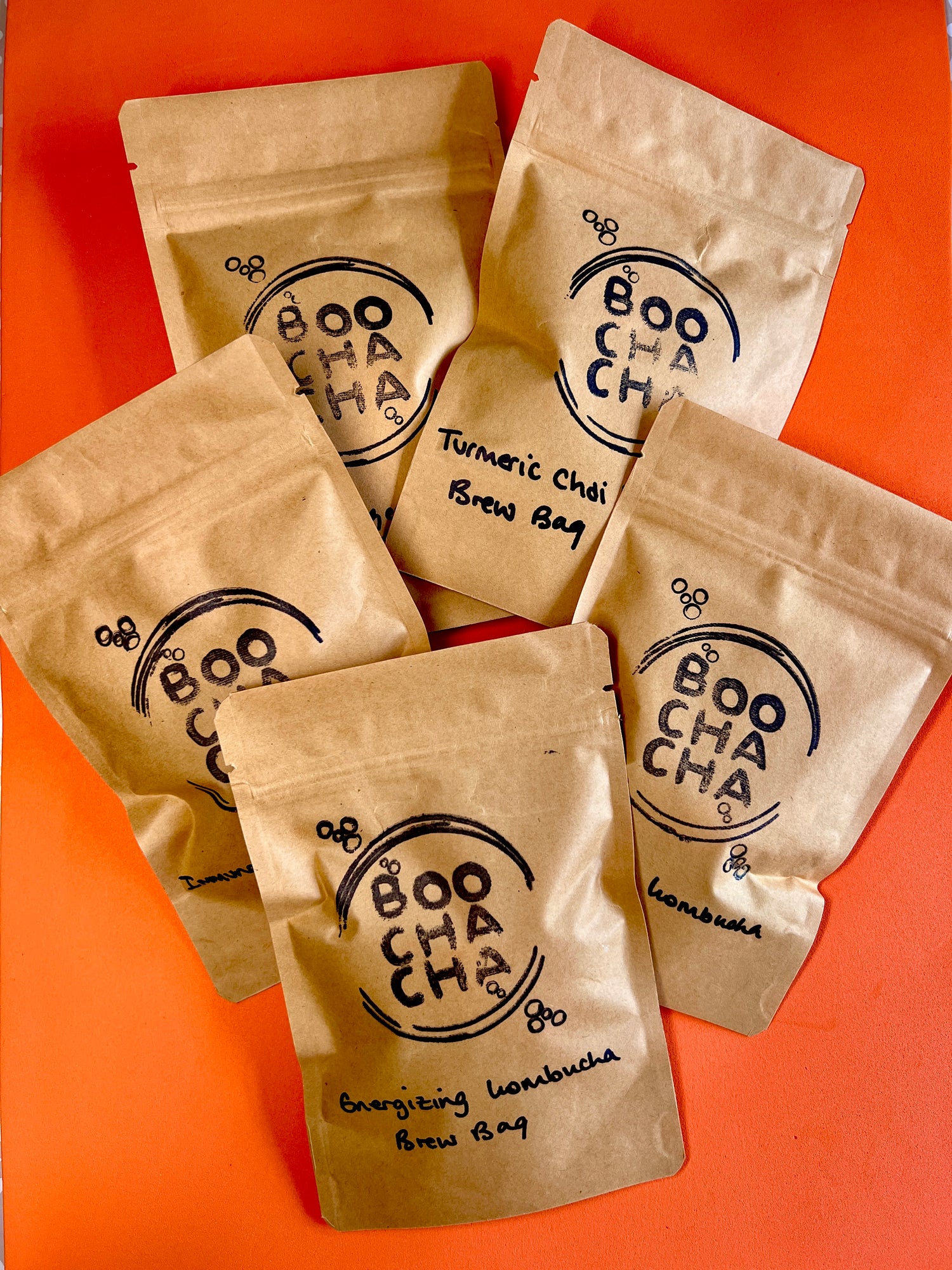Kombucha, a fermented drink made using tea, has gained popularity for its purported health benefits. But beyond the beverage itself, the process of brewing kombucha produces a byproduct that has captured the attention of scientists and sustainable fashion enthusiasts alike: the SCOBY.
.
SCOBY stands for Symbiotic Culture Of Bacteria and Yeast, and it's this cellulose-rich material that is being transformed into an innovative form of vegan leather. Take a look at our page dedicated to the wondrous SCOBY here!
The Science Behind the SCOBY
A SCOBY is a living, growing entity. As kombucha ferments, the bacteria and yeast in the SCOBY convert the sugars in the tea into ethanol and acetic acid. This process not only gives kombucha its distinctive tangy taste but also results in the formation of a layer of cellulose at the surface of the liquid. This cellulose mat, which feels somewhat like a rubbery pancake, is the foundation of what can become vegan leather.
The Science Behind the SCOBY
A SCOBY is a living, growing entity. As kombucha ferments, the bacteria and yeast in the SCOBY convert the sugars in the tea into ethanol and acetic acid. This process not only gives kombucha its distinctive tangy taste but also results in the formation of a layer of cellulose at the surface of the liquid. This cellulose mat, which feels somewhat like a rubbery pancake, is the foundation of what can become vegan leather.
.
From Waste to Wearable
The idea of using SCOBY as a material for creating vegan leather is rooted in the principles of sustainability and waste reduction. Traditional leather production has a significant environmental footprint, involving animal farming, the use of hazardous chemicals in tanning, and substantial water consumption. Vegan alternatives often rely on petroleum-based products, which also have environmental drawbacks.
SCOBY leather, on the other hand, offers a biodegradable and eco-friendly alternative. The process of growing SCOBY leather is relatively simple and low-impact. Once the SCOBY is harvested from the kombucha, it is washed and then stretched out to dry. As it dries, it forms a material that resembles leather in texture and durability.
The idea of using SCOBY as a material for creating vegan leather is rooted in the principles of sustainability and waste reduction. Traditional leather production has a significant environmental footprint, involving animal farming, the use of hazardous chemicals in tanning, and substantial water consumption. Vegan alternatives often rely on petroleum-based products, which also have environmental drawbacks.
SCOBY leather, on the other hand, offers a biodegradable and eco-friendly alternative. The process of growing SCOBY leather is relatively simple and low-impact. Once the SCOBY is harvested from the kombucha, it is washed and then stretched out to dry. As it dries, it forms a material that resembles leather in texture and durability.
.

The Process of Creating SCOBY Leather
The transformation of SCOBY into leather-like material involves several steps:
1. **Harvesting**: Large SCOBYs are removed from kombucha brews. These are typically the by products of commercial kombucha production and would otherwise be composted or discarded.
2. **Purification**: The SCOBYs are thoroughly cleaned to remove any tea residue or kombucha liquid, ensuring that the resulting material doesn't have any unwanted odours or residues.
3. **Moulding and Shaping**: While still wet, the SCOBYs can be moulded into various shapes or laid flat. This flexibility allows for the creation of different textures and patterns.
4. **Drying**: The moulded SCOBY is left to air dry, which can take several days. During this time, it hardens and takes on a leather-like consistency.
5. **Finishing**: The dried SCOBY leather can be treated with natural oils or dyes to enhance its durability and appearance. This step also helps to make the material water-resistant.
The Properties of SCOBY Leather
SCOBY leather has several properties that make it an attractive alternative to traditional leather:
- **Sustainability**: It is a renewable resource that can be produced with minimal environmental impact.
- **Biodegradability**: Unlike synthetic leathers, SCOBY leather can break down naturally at the end of its life cycle.
- **Customisation**: The growing process can be adjusted to create different textures, thicknesses, and colours.
- **Non-Toxic**: The production process is free from the harsh chemicals used in traditional leather tanning.
Challenges and Innovations
While the potential for SCOBY leather is significant, there are challenges to overcome before it can be widely adopted in the fashion industry:
- **Strength and Durability**: While SCOBY leather is durable, it may not yet match the strength of animal leather or some synthetic alternatives. Researchers are experimenting with cross-linking agents and composite materials to enhance its physical properties.
- **Scaling Production**: Currently, producing SCOBY leather on a commercial scale is challenging. Innovations in fermentation technology and production methods are needed to make large-scale production feasible and cost-effective.
- **Market Acceptance**: As with any new material, getting consumers and manufacturers to embrace SCOBY leather requires education and demonstration of its benefits and uses.
.

The Future of SCOBY Leather
The future of SCOBY leather looks promising as scientists continue to refine the material's properties and production processes. Collaborations between bio-technologists, designers, and the fashion industry are key to bringing this sustainable material to the mainstream market.
As consumer awareness of environmental issues grows, the demand for sustainable materials is likely to increase. SCOBY leather could become a staple in the world of eco-conscious fashion, offering a guilt-free alternative to both animal leather and synthetic materials.
Conclusion
The innovative use of waste kombucha SCOBYs to create vegan leather is a testament to the ingenuity of scientists and the growing commitment to sustainable practices. This material not only provides an eco-friendly alternative to traditional leather but also adds value to a by product that would otherwise go to waste. As research and development continue, we may soon see SCOBY leather becoming a common material in fashion and beyond, helping to reduce waste and promote a more sustainable future.
.
Further listening can be found 27 minutes in to the radio show linked here, from pm on BBC 4.


